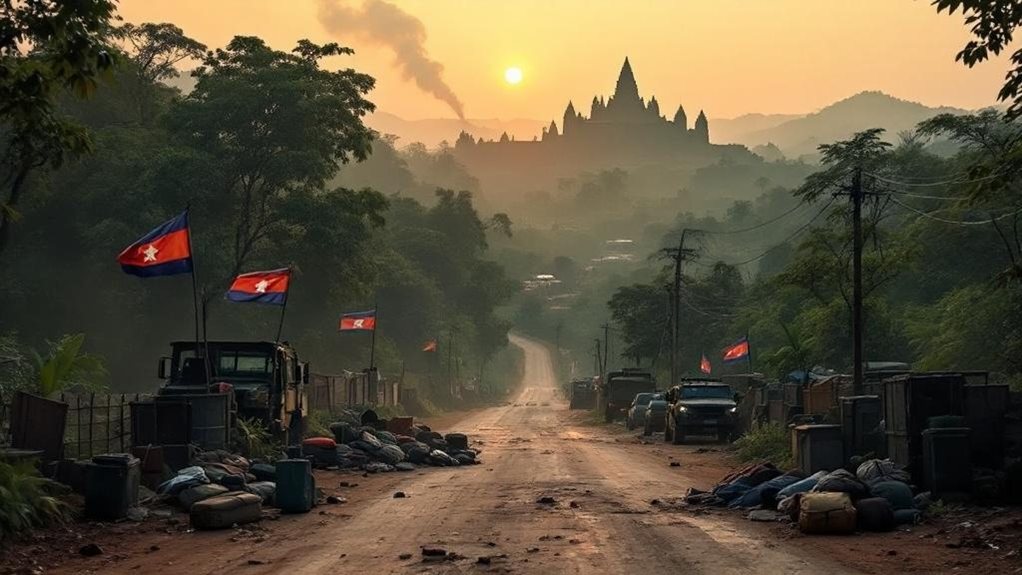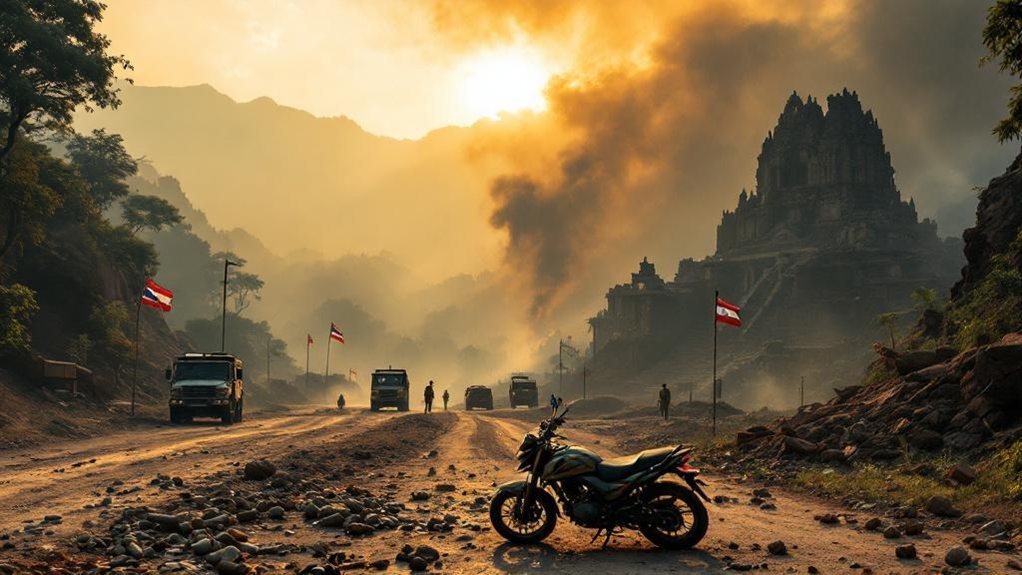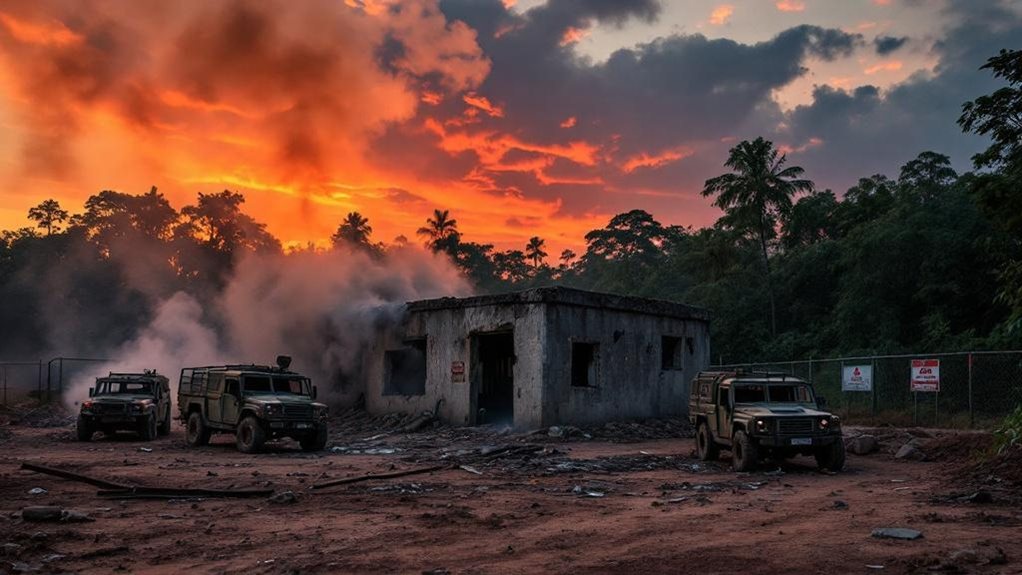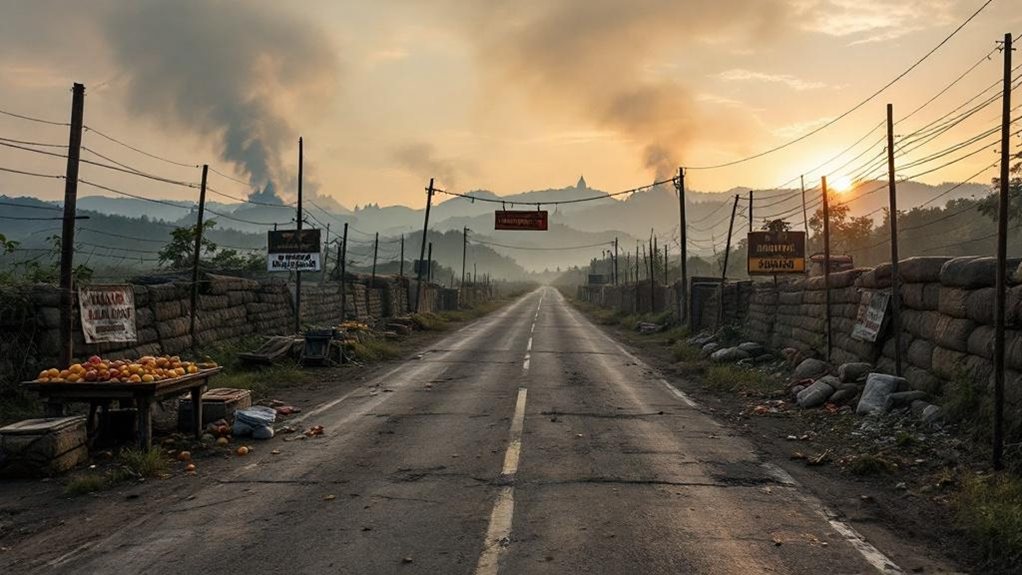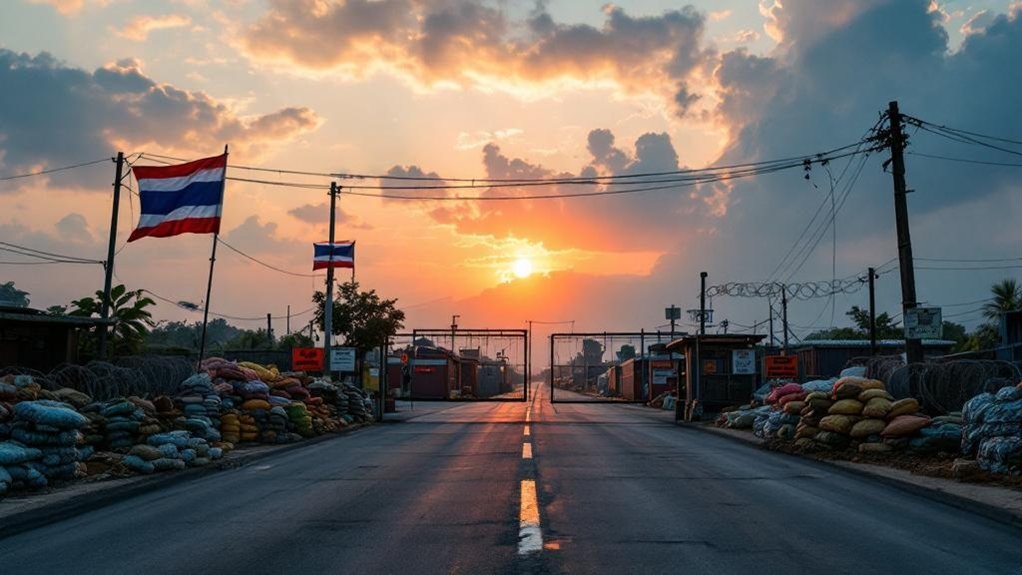In 2025, Cambodia fired back at Thailand over border provocations, accusing Thai forces of escalating tensions near the Preah Vihear and Prasat Ta Muen Thom temples. This accusation followed a Thai soldier’s injury from a landmine on July 23. The violence on July 24 resulted in 34 deaths, including soldiers and civilians, and displaced approximately 200,000 people. No strangers to territorial disputes, both nations assert their military actions as defensive, evoking international concern over regional stability. Further details may reveal unfolding implications.
The longstanding border conflict between Cambodia and Thailand has reignited with increased intensity, as Cambodia accuses Thailand of provocative actions that have escalated tensions along their disputed boundary. The origins of this conflict trace back to the Franco-Siamese Treaties of 1904-1907, with territorial disputes becoming a longstanding issue. The International Court of Justice‘s 1962 ruling, which awarded the Preah Vihear Temple to Cambodia, further heightened the tensions.
The Cambodia-Thailand border conflict reignites, rooted in historic treaties and the contentious Preah Vihear Temple ruling.
From 2008 to 2011, the conflict saw significant intensification with multiple violent encounters, and recent incidents have continued this trend, particularly around Prasat Ta Muen Thom temple in early 2025.
Military clashes have surged again, with hostilities reigniting on 24 July 2025, during which at least 34 fatalities were reported. The fatalities included 13 civilians and 8 soldiers from Thailand, alongside 8 civilians and 5 soldiers from Cambodia. The fighting spanned 12 locations along the contested border, leading to approximately 200,000 civilians being displaced. Reports as of 26 July 2025 indicate at least 32 individuals were killed, though casualty figures from Cambodia remain unconfirmed.
The escalation was preceded by an incident on 23 July 2025, where a Thai soldier was injured by a PMN-2 landmine in Nam Yuen district. This event heightened tensions, with Cambodia having reinforced its border positions prior to the skirmish on May 28. The incident underscored the fragility of the border situation and prompted international calls for restraint.
While Cambodia accused Thailand of provocations near the Preah Vihear Temple, Thailand countered by attributing the initiation of conflict to Cambodian militarization. Thailand recalled its ambassador, expelling the Cambodian envoy after the landmine incident.
Cambodia’s accusations against Thailand include allegations of aggressive military presence and actions near sacred temple sites, disrupting visitors singing the Cambodian national anthem. They argue that Thailand’s maneuvers have exacerbated an already fragile situation. Conversely, Thailand contends that Cambodia provoked the escalation through increased troop deployments and claims that their military actions were defensive.
The conflict’s implications extend beyond the bilateral dispute, affecting regional stability and drawing concern from international actors such as ASEAN, the U.S., China, and the United Nations, highlighting the geopolitical significance of this longstanding border dispute. Historical grievances, such as those stemming from the Franco-Siamese treaty of 1907, continue to influence the dynamics between the two nations.
